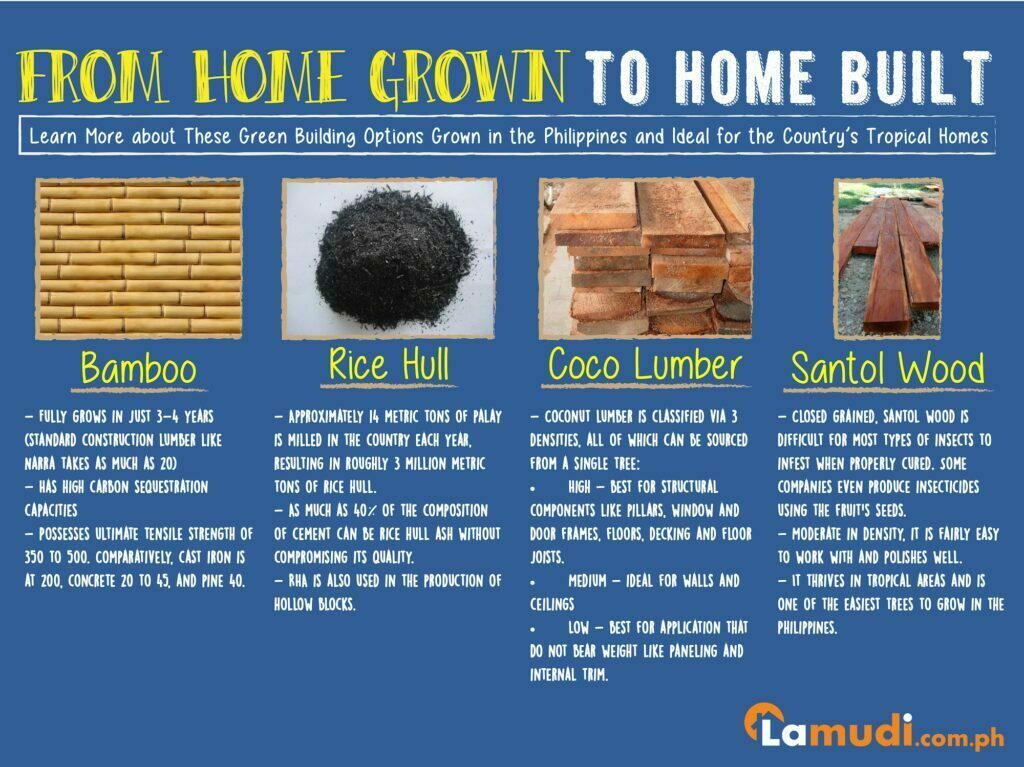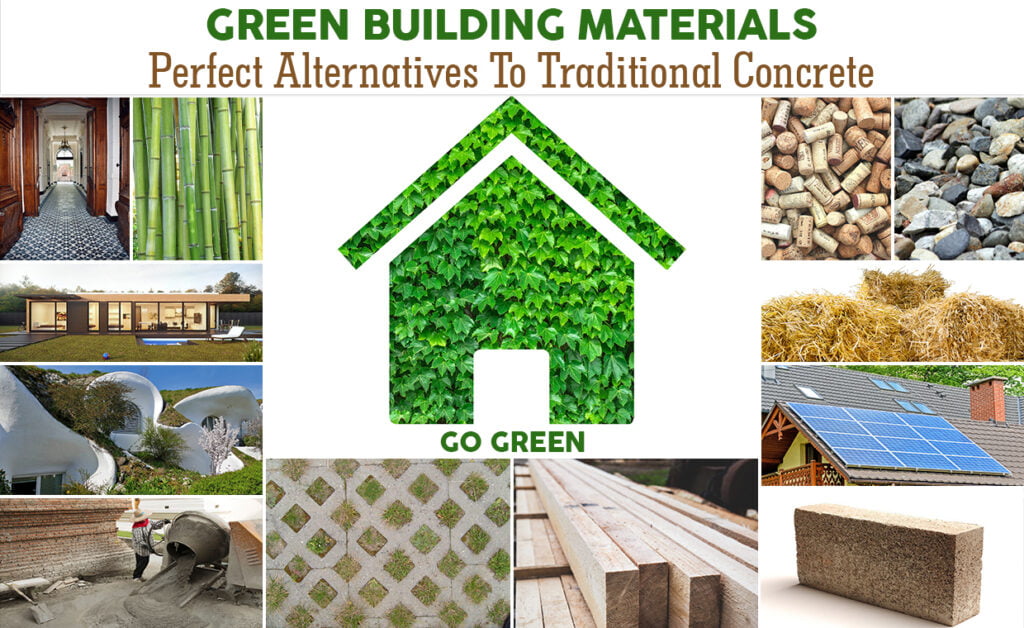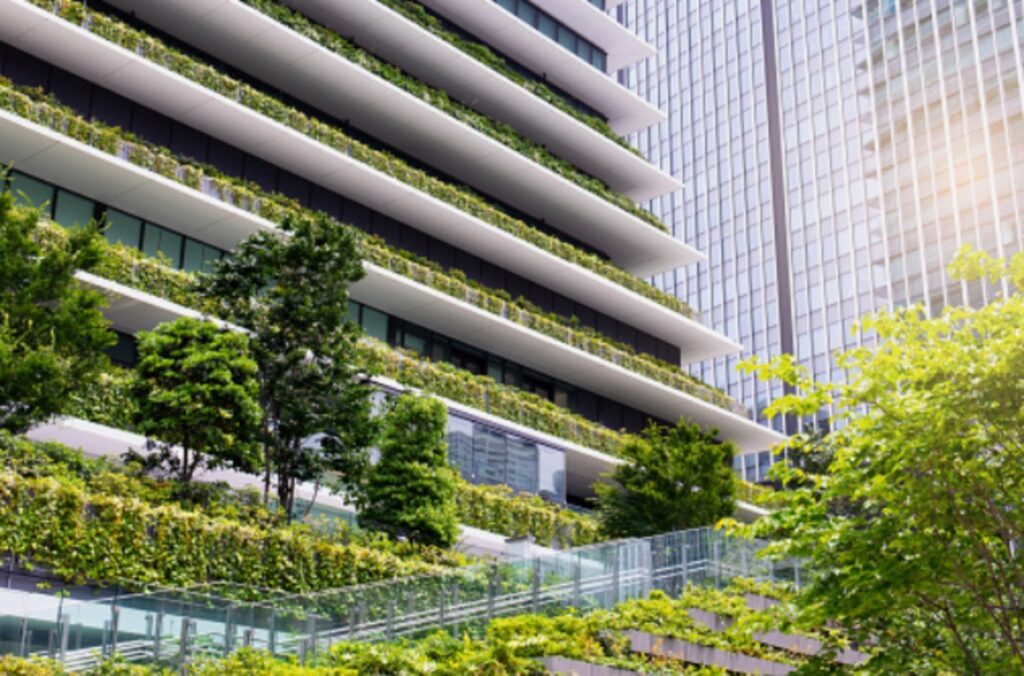You may not realize it, but the materials used in construction play a significant role in shaping the sustainability and environmental impact of a building. In recent years, there has been a growing movement towards promoting local sustainability by utilizing native materials in construction projects. By incorporating materials that are readily available in the surrounding environment, such as timber, stone, or clay, not only can we reduce the carbon footprint associated with transportation, but we can also support local economies and preserve cultural heritage. In this article, we will explore the importance of utilizing native materials in construction, and how this practice is becoming increasingly popular in the pursuit of a more sustainable future.
Understanding Local Sustainability
Defining local sustainability
Local sustainability refers to the concept of using resources and materials that are readily available in a specific region or locality for construction purposes. It involves utilizing native materials, techniques, and knowledge to create buildings and infrastructure that are environmentally friendly, socially and culturally sensitive, and economically viable.
Importance of local sustainability in the construction industry
Local sustainability plays a crucial role in the construction industry for several reasons. Firstly, it contributes to the preservation of the local environment by reducing the need for importing materials from distant locations, thus minimizing the carbon footprint associated with transportation. Secondly, it promotes economic development by supporting local businesses and industries, creating job opportunities, and stimulating the local economy. Lastly, it helps preserve and showcase the unique cultural heritage of a region by incorporating traditional construction techniques and materials, maintaining the local identity and character.
Native Materials in Egypt
List of commonly used native materials in Egypt
Egypt is blessed with a rich abundance of native materials that have been utilized in construction for centuries. Some of the commonly used native materials in Egypt include:
Mud-brick (adobe): A traditional building material made from a mixture of clay, sand, water, and sometimes straw. Adobe structures have excellent thermal insulation properties and are well-suited to the hot climate of Egypt.
Limestone: Egypt is famous for its ancient limestone monuments, such as the Pyramids of Giza. Limestone is a durable and versatile material that has been used for both structural and decorative purposes in construction.
Palm fronds: The leaves and fronds of palm trees have long been used in Egypt for roofing and weaving mats. These natural materials provide shade and ventilation, keeping the interior spaces cool in the scorching heat.
Coral stone: Along the Red Sea coast, coral stone is commonly used in construction due to its availability and durability. It creates a unique aesthetic and helps blend the built environment with the natural surroundings.
Why favoring native materials can improve sustainability
Favoring native materials in construction offers numerous sustainability benefits. Firstly, it reduces the need for transporting materials over long distances, thus minimizing the associated carbon emissions and energy consumption. By utilizing locally sourced materials, construction projects can significantly reduce their environmental impact.
Moreover, native materials are often more affordable than imported alternatives, making them a cost-effective choice. This not only benefits the builders and developers but also helps to drive economic growth and create employment opportunities within the local community.
Using native materials also preserves and honors the cultural heritage of Egypt. By incorporating traditional construction techniques and materials, the built environment becomes a reflection of the local identity, history, and culture, fostering a sense of pride and connection within the community.

This image is property of www.buensalidoarchitects.com.
Benefits of Using Local Materials in Construction
Economic benefits
Utilizing local materials in construction can bring about several economic benefits. Firstly, it supports local industries and businesses by creating a demand for materials that are readily available in the region. This, in turn, helps stimulate the local economy, promoting growth and development.
Additionally, the use of local materials often results in cost savings. Since they do not need to be transported from distant locations, the costs associated with transportation, such as fuel and logistics, are significantly reduced. This can make construction projects more affordable and financially sustainable, benefiting both the builders and the end-users.
Environmental benefits
Using local materials in construction has significant environmental advantages. By minimizing the need for transportation, the carbon footprint associated with the construction process is greatly reduced. This helps lower greenhouse gas emissions and mitigate climate change.
Furthermore, native materials are often more environmentally friendly than their imported counterparts. For example, mud-brick (adobe) has excellent thermal insulation properties, reducing the energy consumption required for temperature control within buildings. Additionally, using sustainably sourced palm fronds and coral stone helps preserve local ecosystems and biodiversity.
Social and cultural benefits
The use of local materials also has important social and cultural benefits. By incorporating traditional construction techniques and materials, buildings become an embodiment of local culture and heritage, creating a sense of pride and identity within the community. This can help strengthen social cohesion and foster a deeper connection with the built environment.
Moreover, the utilization of local materials supports the local workforce, creating job opportunities for skilled craftsmen and laborers. This contributes to the social and economic well-being of the community, offering a sustainable livelihood.
Case Studies of Sustainable Construction in Egypt
Successful examples of sustainable construction
Egypt has witnessed several successful examples of sustainable construction that emphasize the use of local materials. One such example is the “New Hermopolis” project in Mallawi, where mud-brick construction techniques were employed in the restoration and construction of buildings. By utilizing local labor and materials, the project managed to create environmentally friendly and culturally sensitive structures, while also stimulating the local economy.
Another noteworthy example is the sustainable tourism development in Siwa Oasis. Here, adobe and palm fronds were utilized to construct eco-friendly accommodations, blending harmoniously with the natural surroundings and preserving the local architectural style.
Challenges and solutions encountered
Despite the numerous benefits, there are certain challenges associated with sustainable construction using local materials in Egypt. One major challenge is the limited awareness and understanding among developers, architects, and engineers regarding the potential of local materials. Many still prioritize imported materials due to perceived prestige or lack of knowledge about the sustainable alternatives available locally.
To address this challenge, awareness campaigns and educational programs can be conducted to highlight the benefits of local materials and showcase successful case studies. Collaborations between architects, engineers, and local communities are also essential for sharing knowledge and expertise.
Another challenge is the need for skilled labor and craftsmen who are experienced in working with native materials. Training programs and vocational courses can help bridge this skills gap by providing education and hands-on training in sustainable construction techniques.

This image is property of acropolis-wp-content-uploads.s3.us-west-1.amazonaws.com.
Compatibility of Native Materials with Modern Construction Techniques
How native materials can be effectively utilized with modern construction methods
Native materials can be effectively utilized with modern construction methods by combining traditional techniques with contemporary engineering practices. For example, mud-brick construction can be reinforced with steel or concrete elements to enhance structural stability and durability. This integration of traditional and modern techniques ensures that buildings meet modern safety standards while preserving the aesthetic and sustainable qualities of native materials.
Moreover, engineering innovations such as the use of environmentally friendly binders and coatings can enhance the performance and longevity of native materials. For instance, lime-based mortars and plasters can prevent water infiltration and erosion in limestone structures, prolonging their lifespan.
Innovation in the use of native materials
There has been a growing trend of innovation in the use of native materials in construction. Architects and engineers are exploring new ways to maximize the potential of these materials for sustainable and aesthetically pleasing designs.
One such innovation is the utilization of 3D printing technology with native materials. By using locally sourced materials, such as mud or clay, 3D printers can create intricate and customized structures with minimal waste and resource consumption. This technology has the potential to revolutionize construction processes, making them more sustainable and efficient.
Other innovative approaches include the development of composite materials that combine traditional materials with modern additives, enhancing their strength, durability, and resistance to environmental factors.
Training and Education in Sustainable Construction
The importance of education and training for sustainable construction
Education and training play a crucial role in promoting sustainable construction practices. By increasing awareness and knowledge about local materials, techniques, and their sustainable benefits, professionals in the construction industry can make informed decisions and contribute to a more sustainable built environment.
Training programs and educational initiatives help bridge the gap between traditional building practices and modern construction methods. They provide architects, engineers, and construction workers with the necessary skills and expertise to utilize native materials effectively, ensuring that sustainable principles are integrated into every stage of the construction process.
Current initiatives and programs for sustainable construction education in Egypt
In Egypt, there are ongoing initiatives and programs focused on sustainable construction education. For example, the Egyptian Green Building Council (Egypt GBC) offers training courses and certifications in green building practices, including the use of local and sustainable materials.
Universities and academic institutions also play a vital role in promoting sustainable construction education. Many architectural and engineering programs incorporate modules or courses that specifically focus on sustainable design and construction, emphasizing the use of native materials and techniques. These educational efforts are essential in nurturing a new generation of professionals who are well-versed in sustainable construction practices.

This image is property of cloudfrontgharpediabucket.gharpedia.com.
Policy and Legislation for Sustainable Construction
Existing laws and regulations
Egypt has existing laws and regulations that promote sustainable construction practices. The Law on Building Organization and Environment imposes certain environmental standards and requirements for construction projects, including energy efficiency and waste management guidelines.
Moreover, the Ministry of Environment has established guidelines for sustainable materials and construction practices, encouraging the use of local materials and techniques that minimize environmental impact. These guidelines provide a framework for architects, engineers, and developers to incorporate sustainable principles into their projects.
Policy recommendations for promoting sustainability in construction
To further promote sustainability in construction, additional policy measures can be implemented. These recommendations include:
Providing incentives: The government can offer financial incentives, such as tax breaks or subsidies, to projects that use local and sustainable materials. This encourages developers to make environmentally conscious choices and helps offset the potentially higher initial costs of sustainable construction.
Mandatory standards: Setting mandatory standards for sustainable construction practices can ensure that all construction projects adhere to environmentally friendly principles. This can include requirements for energy efficiency, waste management, and the use of native materials.
Research and development funding: Increased government investment in research and development related to sustainable construction materials and techniques can drive innovation and foster the development of more sustainable solutions. This can lead to breakthroughs in construction practices, making sustainable materials more accessible and cost-effective.
Involving the Community in Sustainable Construction
Engaging the local community in construction projects
Engaging the local community in sustainable construction projects is essential for creating a sense of ownership and ensuring the long-term success of the initiatives. Community involvement can take many forms, including consultations, participation in decision-making processes, and engaging local artisans and craftsmen in the construction process.
Consultations with the local community can help incorporate their input and understanding of traditional practices and cultural preferences into the design and construction process. This can help create buildings that are not only sustainable but also culturally sensitive and socially relevant.
Benefits of community involvement
Involving the community in sustainable construction projects has several benefits. Firstly, it builds trust and goodwill between the project developers and the local population, fostering a sense of pride and ownership within the community. This can lead to the long-term preservation and maintenance of the structures, ensuring their sustainability.
Moreover, community involvement creates job opportunities for local artisans, craftsmen, and laborers, enhancing the economic well-being of the community. It also promotes the transfer of traditional skills and knowledge to the younger generation, preserving cultural heritage and strengthening social cohesion.

This image is property of acropolis-wp-content-uploads.s3.us-west-1.amazonaws.com.
Role of Architects and Engineers in Promoting Sustainable Construction
Responsibilities of architects and engineers
Architects and engineers play a critical role in promoting sustainable construction practices. They have the responsibility to design and construct buildings that are energy-efficient, environmentally friendly, and culturally sensitive.
Architects are tasked with incorporating sustainable design principles, including the use of local materials and techniques, into their projects. They should consider the environmental impact, energy efficiency, and social context when designing buildings, ensuring that they contribute positively to the built environment.
Engineers, on the other hand, are responsible for implementing sustainable construction methods and ensuring the structural integrity of the buildings. They should collaborate closely with architects to find innovative solutions that maximize the potential of local materials while meeting safety and performance standards.
How architects and engineers can promote the use of local materials
Architects and engineers can promote the use of local materials by raising awareness among clients, developers, and the general public about the benefits of sustainable construction. They can educate their clients about the potential of local materials and the positive impact they can have on the environment, economy, and community.
Furthermore, architects and engineers can actively seek out opportunities to incorporate native materials into their designs. By showcasing successful case studies and demonstrating the aesthetic and sustainable qualities of these materials, they can inspire others to embrace sustainable construction practices.
Looking Ahead: The Future of Sustainable Construction in Egypt
Challenges and opportunities
The future of sustainable construction in Egypt presents both challenges and opportunities. One of the major challenges is changing the mindset of developers and clients who might have a bias towards imported materials or conventional construction methods. Overcoming this challenge requires continued education and awareness campaigns that highlight the benefits and potential of local materials and techniques.
However, there are also immense opportunities for the growth of sustainable construction in Egypt. The country is rich in natural resources and traditional building practices, providing a solid foundation for sustainable development. By capitalizing on these resources and leveraging technology and innovation, Egypt can become a leader in sustainable construction in the region.
Vision for the future of sustainable construction in Egypt
The vision for the future of sustainable construction in Egypt is one where local materials and techniques are embraced and integrated into the mainstream construction industry. It is a future where architects, engineers, and developers prioritize sustainability and consciously choose materials and methods that minimize environmental impact, support local economies, and preserve cultural heritage.
In this vision, sustainable construction practices are the norm rather than the exception. Buildings are energy-efficient, resource-conscious, and aesthetically pleasing, seamlessly blending with their surroundings. The local community plays an active role in the design and construction process, ensuring that buildings are culturally sensitive and socially relevant.
Ultimately, the future of sustainable construction in Egypt is a future where the built environment is a reflection of the country’s rich natural and cultural heritage, creating a sustainable and harmonious relationship between humans and their surroundings.

This image is property of www.construction21.org.

